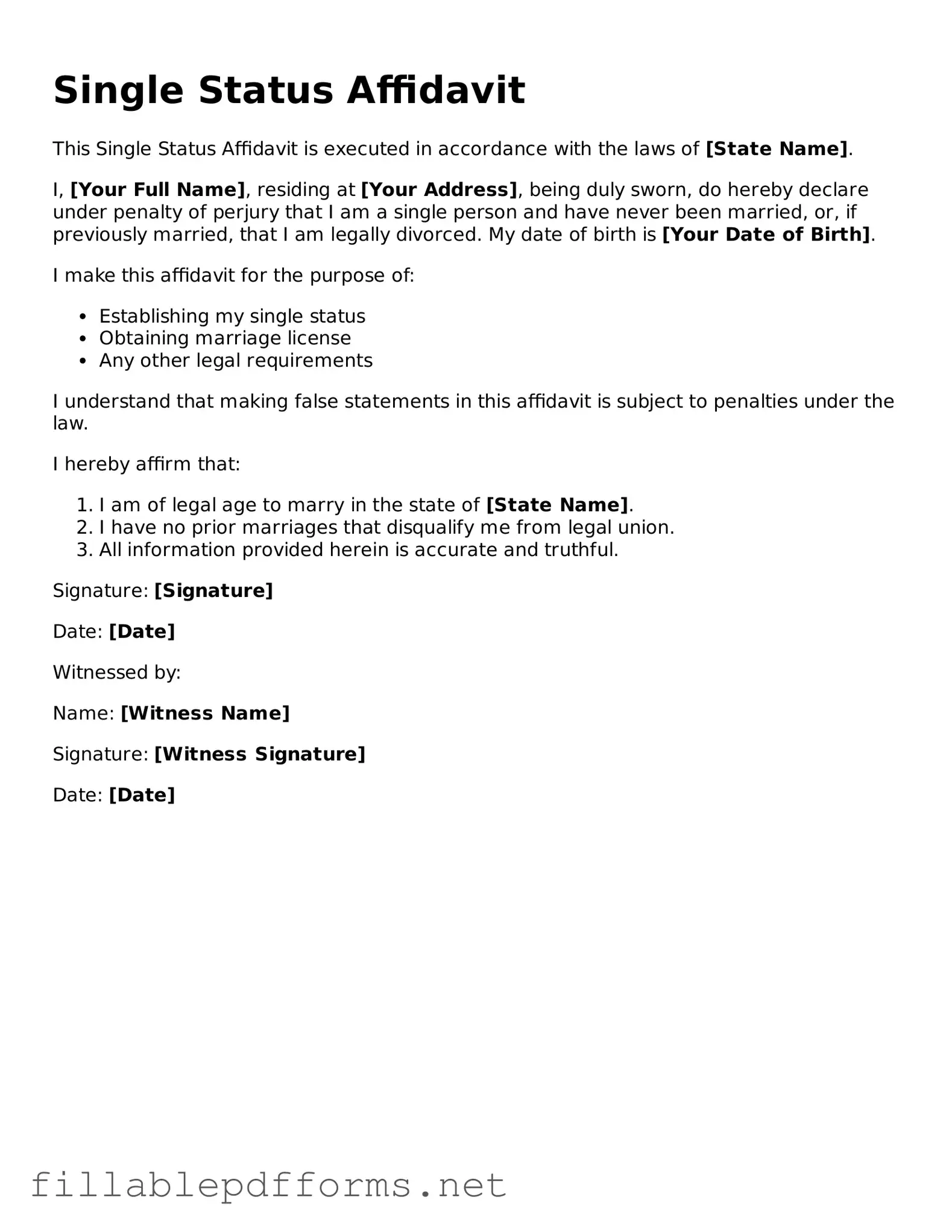Blank Single Status Affidavit Template
The Single Status Affidavit is a legal document that individuals use to declare their single status, often required for marriage licenses or other legal proceedings. This affidavit serves as a sworn statement affirming that the individual is not currently married and is eligible to enter into a new marriage. Understanding the purpose and requirements of this form is crucial for anyone planning to marry or navigate related legal matters.
Launch Editor Here
